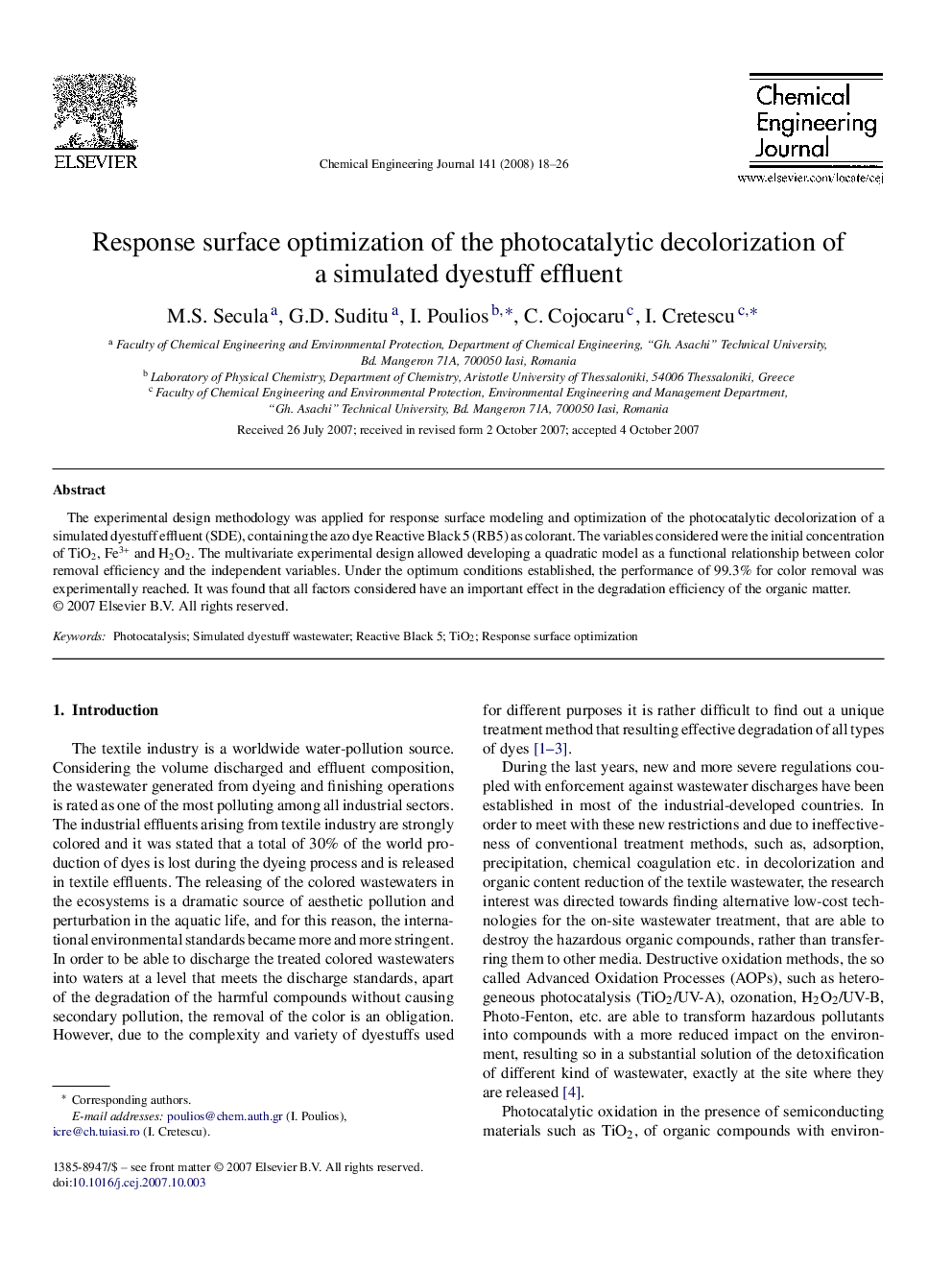| Article ID | Journal | Published Year | Pages | File Type |
|---|---|---|---|---|
| 153036 | Chemical Engineering Journal | 2008 | 9 Pages |
Abstract
The experimental design methodology was applied for response surface modeling and optimization of the photocatalytic decolorization of a simulated dyestuff effluent (SDE), containing the azo dye Reactive Black 5 (RB5) as colorant. The variables considered were the initial concentration of TiO2, Fe3+ and H2O2. The multivariate experimental design allowed developing a quadratic model as a functional relationship between color removal efficiency and the independent variables. Under the optimum conditions established, the performance of 99.3% for color removal was experimentally reached. It was found that all factors considered have an important effect in the degradation efficiency of the organic matter.
Related Topics
Physical Sciences and Engineering
Chemical Engineering
Chemical Engineering (General)
Authors
M.S. Secula, G.D. Suditu, I. Poulios, C. Cojocaru, I. Cretescu,
